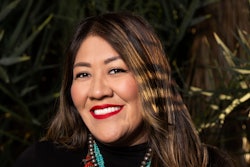University of Phoenix is a Top 100 Degree Producer
In an effort to provide an inclusive and dedicated college experience for diverse populations, University of Phoenix is actively working to address the unique educational needs of tribal students through its Tribal Operations Team.
Led by Patrick Horning, the university’s National Tribal Strategic Alliance Executive, the team plays a critical role in supporting Native American, Alaska Native, and Native Hawaiian students.
Originally established in 2007 when the university saw an influx of Native American, Alaskan Native and Hawaiian students enrolling, the program was established to bridge the gap between tribal communities and higher education by providing culturally sensitive support which includes how to navigate courses, online learning and paying for college. Patrick Horning
Patrick Horning
University of Phoenix conducted two years of in-depth, face-to-face meetings with tribal leaders and engaged in extensive research to gain a deeper understanding of the unique challenges faced by tribal students and their communities. The team focuses on supporting tribal students’ academic success while helping them identify growth opportunities. Through resources like the Tribal Strategic Alliance Agreement, students can take up to eight courses per benefit term for $5,250, significantly reducing or eliminating their debt.
Over the past few years, the team has expanded and reformatted their operations to formally establish the Tribal operations team in 2018.
“It became evident that there were specific educational barriers that this particular demographic dealt with that wasn’t traditional with our other students,” says Horning.
A key role in the team is the Tribal Operations Specialist (TOS), who works closely with Native students, especially during their first four to six classes, addressing challenges like understanding academic expectations, using APA format, and navigating online resources.
“They will meet with them maybe once a week and spend time helping them understand what references and citations are, and by removing these struggles, it eventually takes away their reasons to quit,” says Horning of the role that the TOS plays at the university.
This hands-on approach has resulted in many tribal students outperforming their non-tribal students by the end of their first year.
Another key success of the program is improving student retention and completion rates. Tribal students, who historically have lower completion rates, now show improved academic outcomes under the guidance of the Tribal Operations Team, according to university officials. In 2020, tribal students completed their first course at a rate of 4% higher than the average University of Phoenix student. By the fourth course, that rate increased to 8%.
Horning says that the team also personalizes student support with a number of key wraparound services. Initially, students receive guidance through their first four courses, ensuring that they adjust to college life and develop strategies for success. After this period, support continues on an as-needed basis, tailoring assistance to individual challenges. The team’s goal is to make sure students can manage their studies alongside the demands of work and family life, which are common obstacles for many Indigenous students.
“Students often feel like they are not a good fit,” says Horning, who adds that a focus is placed on creating a sense of belonging for students. “They have that need to belong and often that is missing, and when that happens, it causes them to really shut down and enhance a lack of performance.”
Transitioning from their tribal lands into higher education can be wrought with challenges, says Horning, adding that financial and academic resources are critically important in helping to ensure the success of Native students.
As the university’s work with Native students continues to flourish, Horning says that he would like to see an expanded program that aggressively focuses on creating a robust retention strategy so that tribal students continue to excel even after they’re enrolled in classes.
“It’s really all about learning more about the culture and being aware of the causes of their educational barriers, and it’s about what we can do to provide better support,” says Horning. “That’s why we are here. We are here to help them be successful.”















